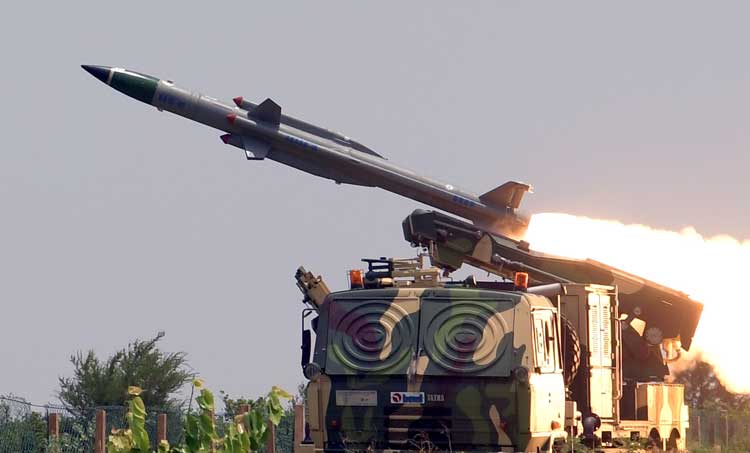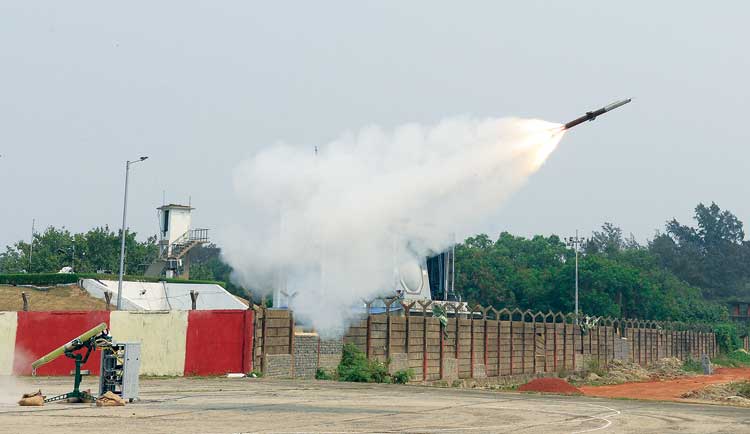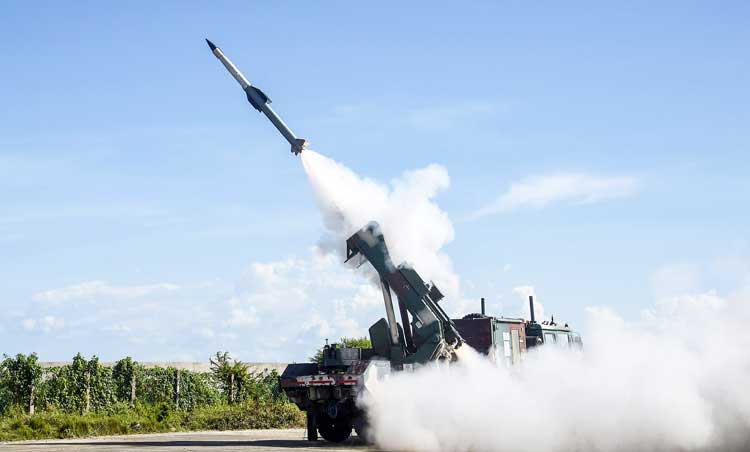INDIAN ARMED FORCES CHIEFS ON OUR RELENTLESS AND FOCUSED PUBLISHING EFFORTS

The insightful articles, inspiring narrations and analytical perspectives presented by the Editorial Team, establish an alluring connect with the reader. My compliments and best wishes to SP Guide Publications.

"Over the past 60 years, the growth of SP Guide Publications has mirrored the rising stature of Indian Navy. Its well-researched and informative magazines on Defence and Aerospace sector have served to shape an educated opinion of our military personnel, policy makers and the public alike. I wish SP's Publication team continued success, fair winds and following seas in all future endeavour!"

Since, its inception in 1964, SP Guide Publications has consistently demonstrated commitment to high-quality journalism in the aerospace and defence sectors, earning a well-deserved reputation as Asia's largest media house in this domain. I wish SP Guide Publications continued success in its pursuit of excellence.
- Operation Sindoor: Resolute yet Restrained
- India’s Operation Sindoor Sends a Clear Message to Terror and the World – ‘ZERO TOLERANCE’
- Japan and India set forth a defence cooperation consultancy framework, talks on tank and jet engines
- Terrorist Attack in Pahalgam in Kashmir: Unfolding a long surgical war against PAK
- Lt General Pratik Sharma takes over Command of Indian Army's Northern Command
Modernising Army Air Defence
Aerial Vigilance to get a boost with bolstering of India's Air Defence arsenal
 |
The Author is Former Director General of Information Systems and A Special Forces Veteran, Indian Army |

The Ministry of Defence (MoD) had issued a request for proposal (RFP) in October 2022, for the supply of 220 guns and 1,42,000 rounds of ammunition at an estimated cost of 6,500 crore to replace the 'in service' air defence guns held by the Indian Army. The service life of these guns is required to be 25 years, while the shelf life of the ammunition is required to be at least 10 years. According to an official, "The winner is also likely to get all subsequent orders for these guns and their spares, from Indian defence forces and other countries who are scouting for similar guns."
Ministry of Defence (MoD) has issued a request for proposal (RFP) for the supply of 220 cutting-edge guns and 1,42,000 rounds of ammunition, marking a crucial step in the modernisation of India's Air Defence forces
The RFP said that the gun should have the capability to engage fighter and transport aircraft, helicopters, all types of remotely piloted aircraft or drones, cruise missiles and micro light aircraft, among others. It also needs to be able to move in all types of terrain and be towed on metalled roads. "The bidders need to prepare a prototype of the weapon and then get it approved before the award of contract," a senior government official told the media. The winning bidder is bound to provide product support for maintenance, materials and spares for at least 25 years from the delivery of the last lot of guns. It will also give at least two years notice prior to closing the production line.

Recent media reports indicate that the bids are to be opened shortly within 2023. There are reportedly three bidders seeking this contract of 6,500 -Bharat Heavy Electricals Ltd (BHEL) in partnership with Italy's Leonardo S.p.A (formerly Finmeccanica) – BHEL joint venture (JV); Larsen & Toubro (L&T), and; Advanced Weapons & Equipment India Ltd (AWEIL) – one of the seven new defence public sector undertakings (DPSUs) formed by corporatisation of the Ordnance Factories.
The winning bidder is poised to not only fulfill this substantial order but also stands to secure future contracts, both domestically and internationally, underlining the global demand for advanced air defence weaponry
The standoff with China is continuing since April-May 2020, with Beijing in no mood to pull back. The ongoing war in Ukraine has highlighted the need to address new threats such as unmanned aerial vehicles (UAVs), loitering munitions, swarm drones, and cruise missiles. The Indian Army is, therefore, focusing on modernising the Army Air Defence (AAD); boosting air defence capabilities with better technology to counter new threats; laser beam-riding Man Portable Air Defence Systems (MANPADS) with night vision, gallium nitride-based radar modules reduce weight for operations in the mountains, and the like. The China threat along the northern borders necessitates the procurement of lightweight radars and mobile weapon systems.

The Indian Army has already initiated the procurement process for MANPADS. Another focus area is gallium nitride-based modules for radars which can significantly reduce weight, a critical factor in the mountains. To counter the threat of loitering munitions, high-rate gun systems, better optic sights, fragmented ammunition and active electronically scanned array radars need to be inducted. The indigenous Akash is a short range SAM. However, the medium range SAM, developed by the DRDO in collaboration with Israel, is now in the process of induction. DRDO is also indigenously developing a quick reaction surface-to-air missile (QRSAM) which has been tested several times.
As geopolitical tensions persist, India's focus on bolstering air defence capabilities has intensified. With an emphasis on state-of-the-art technology, the Indian Army is set to revolutionise its strategies.
In March 2023, the MoD signed a contract worth over 8,160 crore with Bharat Dynamics Limited for two regiments of improved Akash surface-to-air missile (SAM) systems. These regiments have been modified for mountainous operations based on a year of trials. The deliveries and induction of these systems are expected to take place in the next few years since the system is already under production although no timeline has been specified.
In March 2023, another contract signed by the MoD was for the nearly 2,000 crore Project 'Akashteer', which will build a comprehensive air defence picture for the monitoring, tracking and firing of air defence assets. This networking and automation project is on the same lines as the Indian Air Force's Integrated Air Command and Control System network of the IAF. Media has quoted a defence source saying, "It is a major initiative and the entire implementation should be done by March 2024," noting this was probably the fastest project in the army, given that the approval of qualitative requirements came through only in December 2019. Akashteer will link all the radars and control centres of AAD and consolidate the air defence picture, removing duplications or overlaps and also integrate all the weapons. Moreover, it will also be able to communicate with the IAF's network.
The groundbreaking Project 'Akashteer' is set to revolutionise India's air defence network, seamlessly integrating radars, control centers, and weapons systems.This ambitious initiative is on track for full implementation by March 2024.
While the modernisation efforts are underway, officials acknowledge the global shortage of components and hardware for air defence systems due to the war in Ukraine. This shortage, particularly of imported chips for radars, may potentially slow down manufacturing and deliveries. Hopefully alternatives for the imported chips will be found from alternate sources to obviate delays in modernising the AAD. This also reiterates the point that we must become Atmanirbhar (self-reliant) in the Defence Sector in the earliest timeframe.





